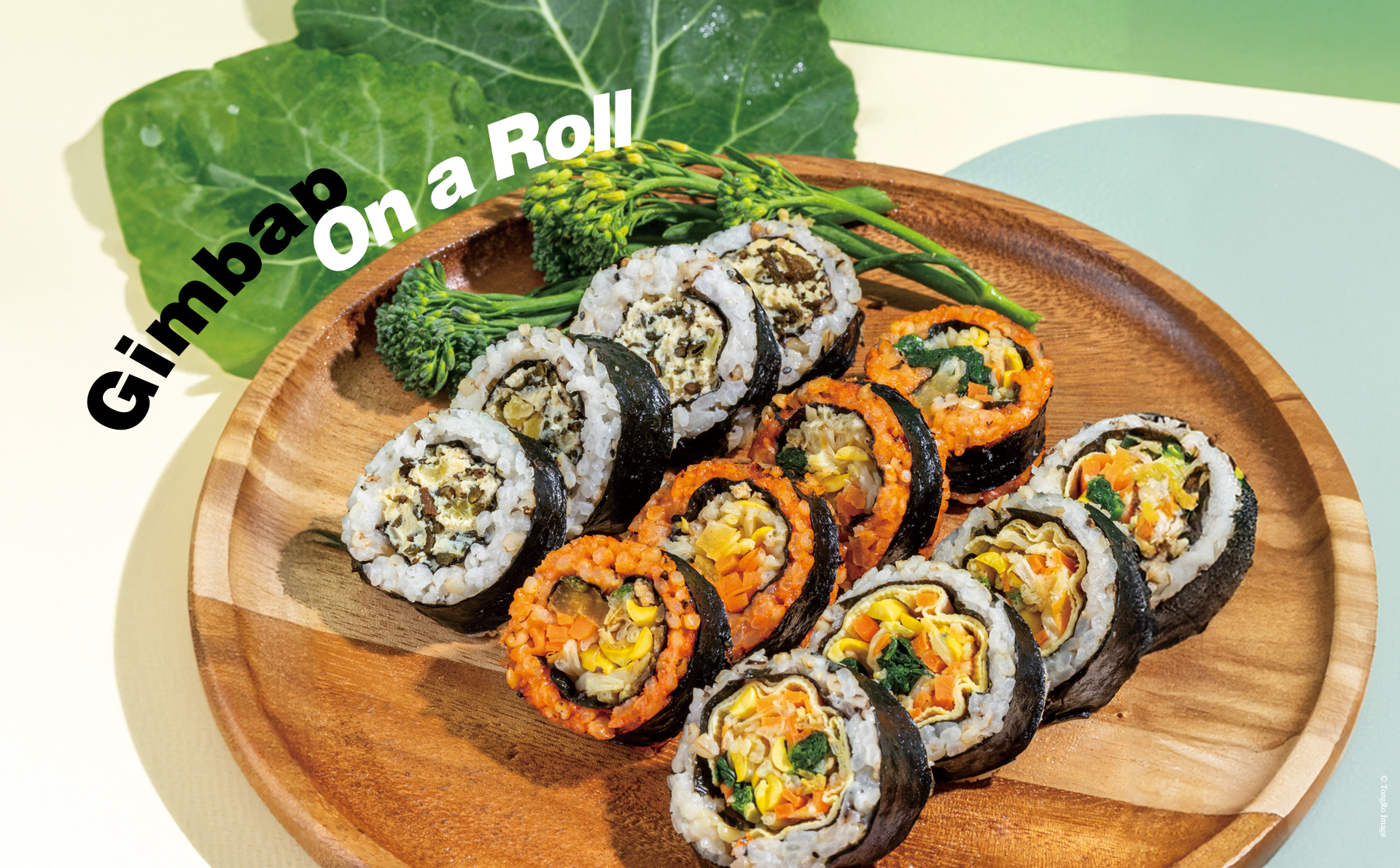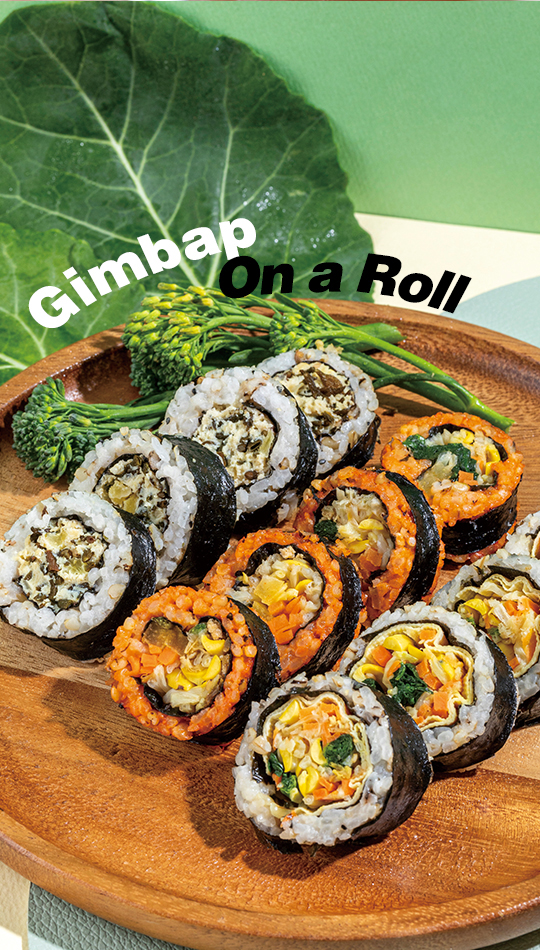What was in your lunch box when you were a child and went on a picnic with friends or family? People may have different ideas when it comes to picnic food, but most Koreans think of one thing: gimbap. Also known as kimbap, gimbap is made by rolling rice and various fillings inside a dried laver. It is a nostalgic dish for Koreans that is now being enjoyed by people all around the world.


Writer. Jang Heejoo
What is Gimbap?
“Gim” in “gimbap” refers to “dried laver” while “bap” refers to “steamed rice.” Gimbap may seem like a very simple dish when looking at the etymology, but it’s much more complex. The interesting dish showcases different flavors and appearances depending on the ingredients. First, let’s learn about the most basic form of gimbap. Basic gimbap consists of chewy rice with cucumbers, carrots, burdock, pickled radish, ham and eggs wrapped in laver. This form is believed to have been perfected after the 1950s.
Gimbap has constantly evolved thanks to the addition of special ingredients such as tuna, fish cakes and cream cheese as well as unique Korean ingredients. Examples include bulgogi gimbap, aged kimchi gimbap, and samgyeopsal (grilled pork belly) gimbap.
Regional characteristics are also reflected in gimbap. You can find gimbap made with a whole fish in Jeju Island and gimbap made with ingredients that prevent it from spoiling in the hot weather of the southern region of Tongyeong. Chungmu gimbap is a type of gimbap that is eaten with nothing added to it but rice seasoned with salt and radish kimchi on the side.
Gimbap also reflects current trends. There is a protein-filled gimbap that is only filled with eggs as well as plant-based gimbap made for vegans. Some gimbap specialty restaurants also offer unique gimbap made with ingredients of their own choosing.
Crossing Global Borders
Gimbap is popular in Korea. Convenience stores sell various types of gimbap, and you can find specialty stores on every street corner. Gimbap is sold in school cafeterias, department stores and supermarkets. It can also be found at highway rest areas, food stalls, etc. High-end restaurants also serve gimbap, which means the dish can be found all over Korea.
Gimbap is gaining in popularity overseas as well. A social media user’s video of frozen gimbap went viral, gaining over 11 million views in just three weeks since it was uploaded. From that point on, gimbap became popular for being a simple yet hearty dish made with healthy ingredients. Large American chain stores that sold frozen gimbap ran out of stock, and Korea’s exports of processed rice foods hit an all-time high of USD 176 million.
Would you like to try the dish that people around the world are going crazy about? A good way to try gimbap is to wrap a piece of laver around some steamed rice seasoned with salt and your favorite cooked vegetables. Experience the global “gimbap craze” as you fall in love with the harmonious taste and charm of gimbap that changes with every ingredient.
Egg Roll Gimbap
5 Minutes
INGREDIENTS
Row of Frozen Gimbap, Two Eggs, One Tablespoon of Cooking Wine, Pinch of Salt, Drizzle of Cooking Oil, Sprinkle of Sesame Seeds
- Crack two eggs into a deep bowl. Add a tablespoon of cooking wine and a pinch of salt, and whisk.
- Remove the stringy part of the eggs with a strainer or chopsticks.
- Defrost the frozen gimbap.
- Add cooking oil to the pan. Use a paper towel to spread the oil evenly around the pan, then fry the eggs.
- Remove the eggs from the pan before they are fully cooked and place them on top of the frozen gimbap.
- Cut the gimbap into the desired size and sprinkle with sesame seeds.
Gimbugak Gimbap
15 Minutes
INGREDIENTS
Laver for Gimbap, Rice Paper, Oil, Water, One Bowl of Rice, Three Tablespoons of Tuna, Two Tablespoons of Mayonnaise, Half a Teaspoon of Sugar, Drizzle of Sesame Oil, Sesame Seeds, Sprouts (garnish), Two Tablespoons of dried laver flake (optional)
- Use a spray bottle or brush to wet rice paper with water, then apply laver.
- Cut the laver and rice paper into quarters or thirds with scissors.
- Roll parchment paper around a cylindrical glass and wrap the laver around it.
- Without removing the parchment paper on laver, microwave the glass for two to thirty seconds to remove moisture.
- Add oil to a pan and fry the laver along with the parchment paper to make gimbugak (laver chips). Use chopsticks or tongs when frying to maintain the cylindrical shape of the laver. Remove from the pan once the laver is fried, then remove the parchment paper.
- Add tuna, mayonnaise, sugar, sesame oil and dried laver flake (optional) to rice and mix. Fill the laver with the rice mixture.
- Transfer the gimbugak gimbap to a plate and garnish with sprouts and sesame seeds.
